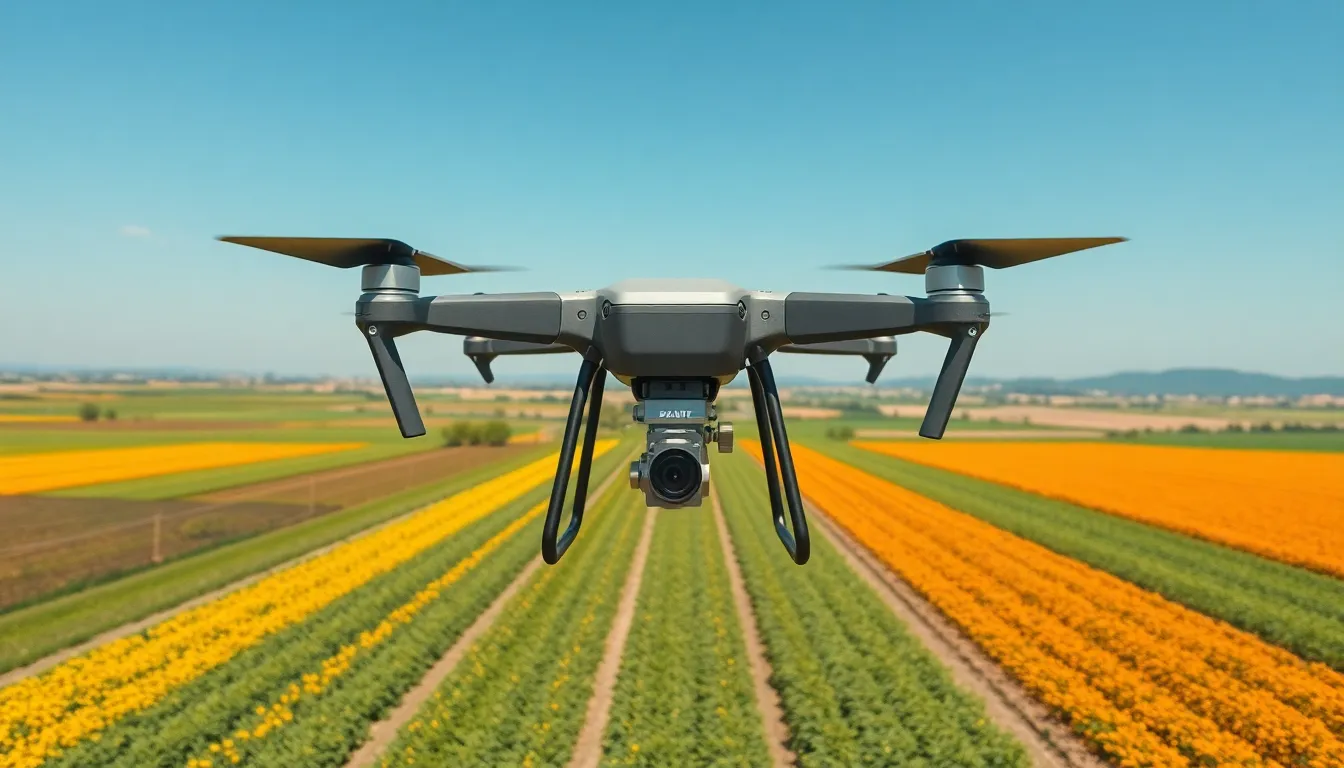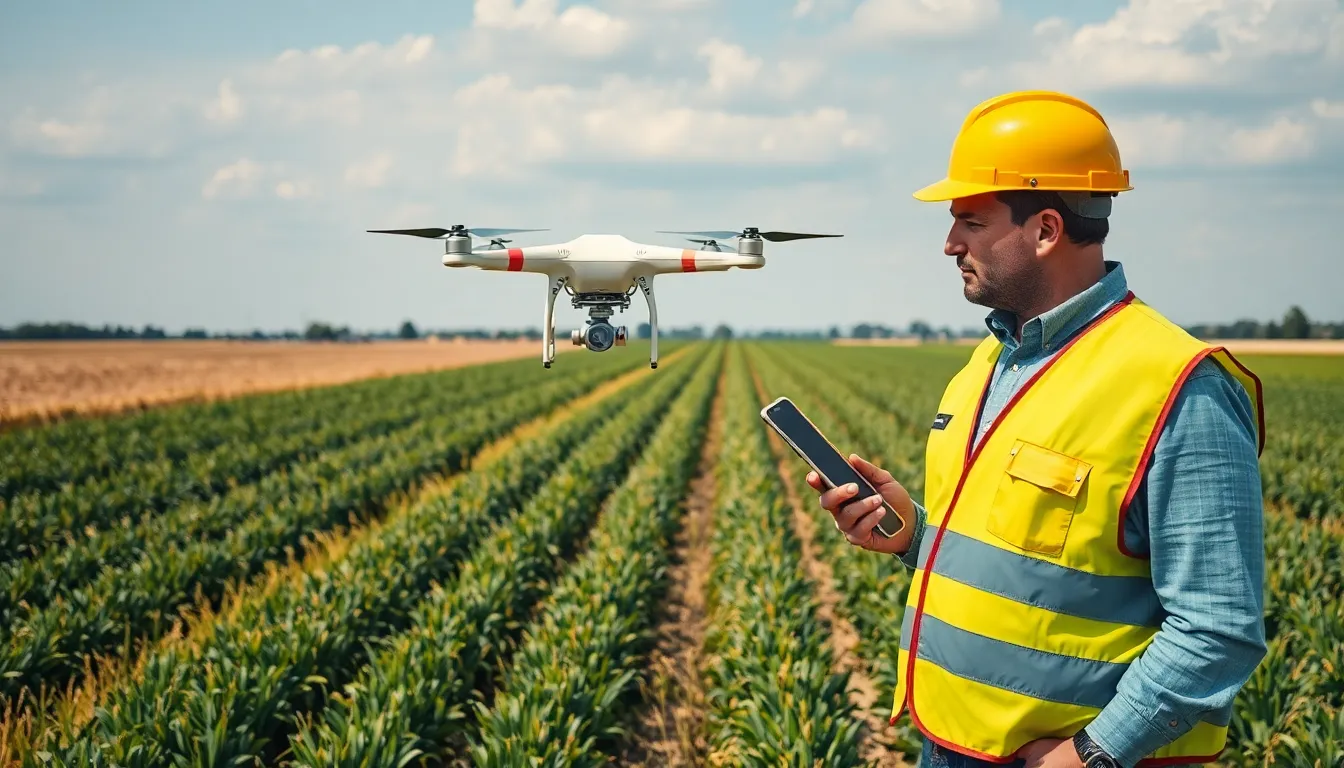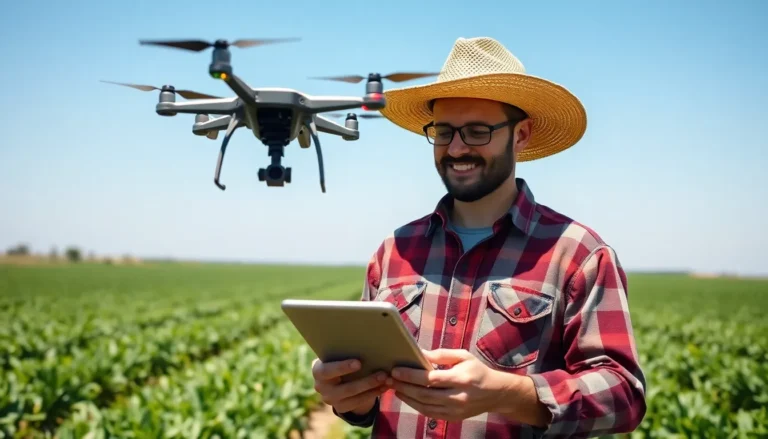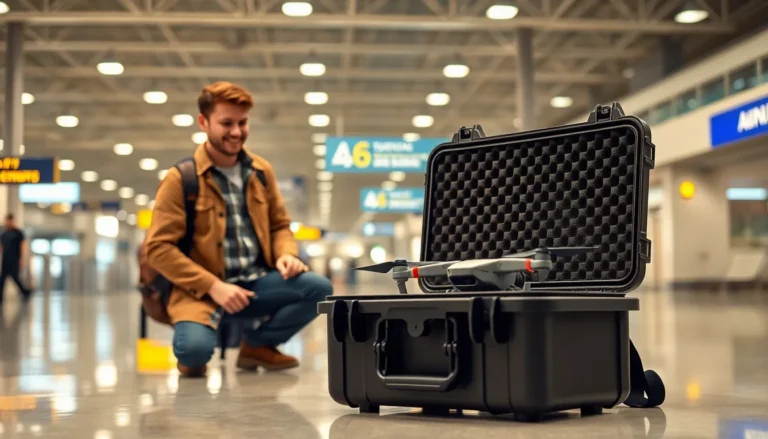In a world where the sky’s the limit, drone aerial surveys are taking surveying to new heights—literally! Gone are the days of lugging heavy equipment across rugged terrain or squinting at paper maps. With drones buzzing overhead, surveying has become faster, more efficient, and dare we say, a bit cooler. Who wouldn’t want to be the person controlling a flying robot?
Table of Contents
ToggleOverview of Drone Aerial Surveys
Drone aerial surveys utilize unmanned aerial vehicles (UAVs) equipped with high-resolution cameras and advanced sensors to collect data and imagery from above. This technology enhances data accuracy and reduces time spent on projects, delivering results more efficiently than traditional surveying methods. Drones capture detailed images and generate three-dimensional models, offering valuable insights for various applications.
In agriculture, drone surveys monitor crop health and optimize yields by providing precise data on plant growth and soil conditions. Infrastructure projects benefit from aerial assessments that identify structural issues, enabling faster repairs and maintenance. Environmental studies also use drone surveys to monitor changes in landscapes, assess wildlife habitats, and map natural resources.
Data capture occurs rapidly, allowing professionals to analyze large areas in a fraction of the time required by ground surveys. Aerial surveys improve safety by minimizing the need for personnel to access hazardous or hard-to-reach locations. Additionally, the cost-effectiveness of drone surveys makes them an attractive option for businesses looking to streamline operations.
The integration of drone technology into surveying practices promotes innovation and enhances the overall quality of data collection. Enhanced data accuracy derived from drone surveys supports informed decision-making across numerous sectors, driving efficiency and productivity. Their transformative impact continues to grow, cementing drones as essential tools in modern surveying.
Benefits of Drone Aerial Surveys


Drone aerial surveys offer significant advantages over traditional surveying methods. Their use enhances efficiency and accuracy while improving overall project outcomes.
Cost-Effectiveness
Cost savings represent a major benefit of drone aerial surveys. Utilizing drones typically reduces labor costs associated with personnel on the ground. Equipment purchase and maintenance expenses also decrease, as lightweight drones require less investment than traditional surveying gear. The ability to capture high-quality data quickly means contractors spend less time on-site. Lower operational costs often result in a higher return on investment for companies. Many industries, such as agriculture and construction, find this cost-effectiveness appealing, leading to increased adoption of drone technology.
Time Efficiency
Time efficiency stands out as a crucial advantage of drone aerial surveys. Drones complete projects in a fraction of the time required by traditional surveying methods. Rapid data collection allows professionals to analyze expansive areas without delays, enabling faster decision-making processes. They can gather detailed imagery and data in just hours, whereas conventional methods may take days or weeks. Quick data availability enhances project timelines, leading to expedited implementation of strategies and solutions. Overall, the integration of drones optimizes workflow and significantly shortens project durations across various sectors.
Applications of Drone Aerial Surveys
Drone aerial surveys find extensive applications across various sectors, enhancing efficiency and data quality.
Agriculture
Drones assist farmers in monitoring crop health by providing real-time data. High-resolution imagery identifies issues such as pest infestations or nutrient deficiencies quickly. These insights enable targeted interventions that optimize yield. Precision agriculture benefits significantly, as adjustments can be made based on accurate data, increasing productivity. Furthermore, using drones lowers labor costs compared to traditional methods, making the approach more cost-effective.
Construction
In construction projects, drones streamline site assessments and progress tracking. They deliver high-quality aerial imagery that supports accurate planning and design. Project managers utilize this data to monitor timelines, ensuring efficient project execution. Regular aerial surveys help identify potential issues early, reducing downtime and rework costs. This technology enhances collaboration among team members, allowing for informed decision-making that keeps projects on schedule.
Environmental Monitoring
Environmental studies leverage drones for habitat assessments and wildlife monitoring. Equipped with advanced sensors, drones capture data on vegetation health and landscape changes efficiently. Remote areas become accessible without disturbing fragile ecosystems, making data collection less invasive. Such surveys help in conservation efforts by providing critical information on species populations and habitat conditions. Timely analysis enables quick adaptations to changing environmental factors, supporting sustainable management practices.
Technology Behind Drone Aerial Surveys
Drone aerial surveys leverage advanced technology to gather high-quality data efficiently. Drones equipped with sophisticated sensors and cameras set a new standard in surveying practices.
Types of Drones
Several types of drones serve different purposes in aerial surveys. Fixed-wing drones excel in covering vast geographic areas, offering extended flight times which enhance efficiency. Multi-rotor drones provide exceptional maneuverability, making them ideal for detailed inspections in tight spaces. Additionally, hybrid drones combine features of both fixed-wing and multi-rotor designs. This versatility allows them to adapt to various surveying tasks, from agricultural monitoring to infrastructure assessments.
Data Collection Methods
Drone surveys utilize various data collection methods to ensure accuracy. Photogrammetry involves capturing overlapping images to create 3D models of the surveyed area. LiDAR technology uses laser scanning to generate precise topographical maps, perfect for detailed landscape analysis. Additionally, multispectral sensors measure light across different wavelengths, enabling farmers to assess crop health. Combining these techniques produces comprehensive data sets that support informed decision-making for industries like construction and environmental management.
Challenges in Drone Aerial Surveys
Drone aerial surveys face specific challenges that affect implementation and effectiveness. Regulatory hurdles and technical limitations often pose significant obstacles in maximizing the potential of drone technology.
Regulatory Hurdles
Compliance with regulations remains a primary challenge for drone operations. Various jurisdictions impose specific rules governing drone usage, and these can significantly vary. Operators must navigate complex legal landscapes that include flight restrictions in urban areas and restrictions near airports. In addition, acquiring permits adds time to project timelines. Organizations often experience delays in project launches due to lengthy approval processes. Understanding local regulations requires constant updates to remain compliant, complicating operational efficiency for many businesses.
Technical Limitations
Technical limitations of drones can impact data quality and survey accuracy. Specific conditions, including strong winds or inclement weather, can hinder drone performance. Battery life presents another limitation, as many drones can only operate for 20 to 30 minutes on a single charge. Operators often face challenges when flying drones over large or expansive areas, which may require multiple flights and added logistics. Data processing can also become time-consuming when dealing with high-resolution imagery or complex datasets. Addressing these technical shortcomings demands continual investment in technology and training.





